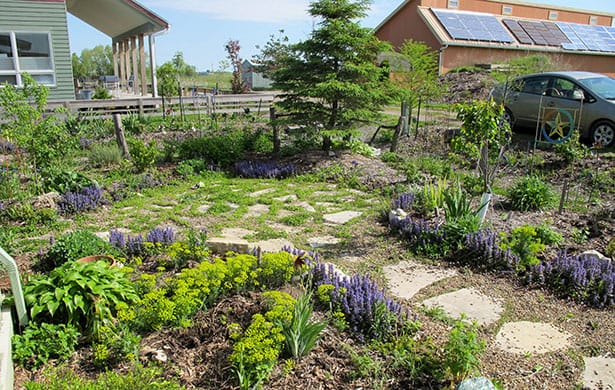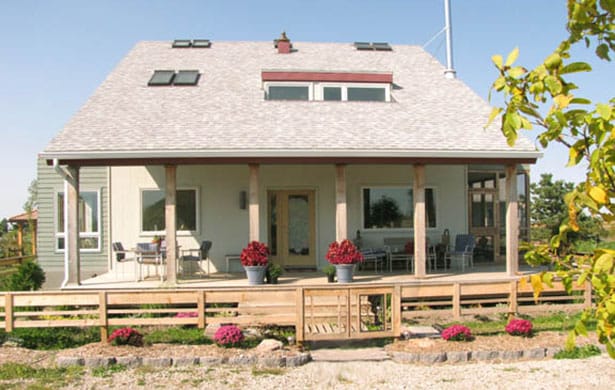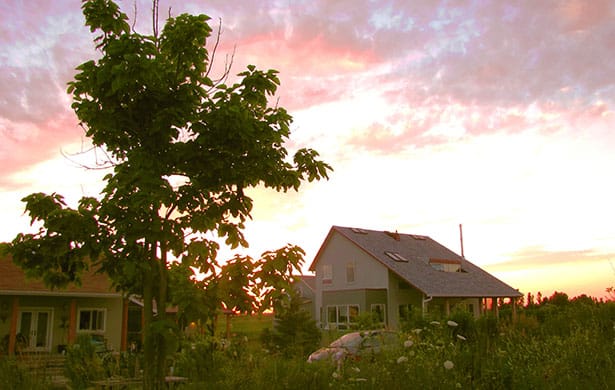Abundance EcoVillage
Fairfield, Iowa, United States
Photo by lonniegamble, CC BY 2.0
Abundance EcoVillage is a planned off-grid community located on agricultural land outside of the town of Fairfield. Residents can purchase a lot and build a house to required performance standards, creating a robust community that promotes health and prosperity for the residents and greater environment.
15 acres, up to 23 single family units, 2 multi-family units, 14 homes occupied
2002-ongoing; 2012
Michael Havelka, Lawrence Gamble, Amy Greenfield
Performance levels achieved:
Standard
Good
Better
Living
Regenerative
| Place | |
|---|---|
| Limits to Growth | |
| Food | |
| Habitat | |
| Transportation | |
| Water | |
| Energy | |
| Health + Happiness | |
| Civilized Environment | |
| Neighborhood Design | |
| Biophilia | |
| Resilient Connections | |
| Materials | |
| Material Plan | |
| Embodied Energy & Carbon | |
| Waste | |
| Equity | |
| Neighborhood & Access | |
| Access to Nature | |
| Access to Community Services | |
| Investment | |
| Beauty | |
| Inspiration |
Goals & Strategies:
Place
-
Food
Goals: Promote community engagement in agriculture.
Strategies: Community gardens and greenhouse, permaculture landscaping.
Habitat
Goals: Not defined.
Strategies: Landscaping with native prairie plants, constructed wetlands for water purification, beekeeping, large amount of acreage not developed.
Transportation
Goals: Promote commuting by bike.
Strategies: Bike infrastructure connecting to greater community, walking paths.
Water
-
Water
Goals: 100% stormwater infiltration on site, blackwater treatment on-site.
Strategies: Rainwater capture, storage and reuse for non-potable uses in the home, constructed wetlands.
Energy
-
Energy
Goals: Consume 80% less energy than code, maximum 300 kilowatts per month per house.
Strategies: Passive solar design strategies, passive house envelope strategies, on site renewable energy: Wind, solar PV and hot water, passive ventilation, geothermal for heating and cooling.
Health + Happiness
-
Neighborhood & Access
Goals: Foster community, promote health and wellbeing for residents.
Strategies: Public access to streets, walking paths, outdoor community amphitheater, ponds for swimming, community education on sustainable living, community hosts lectures, films and concerts.
Materials
-
Materials
Goals: Sustainable materials preferred.
Strategies: Wood construction, labeled material preference for no toxicity.
Waste
Goals: 100% food wastes composted.
Strategies: Waste treated on site, composting, recycling facilities on site and collection services provided to the neighborhood.
Sources:
abundance-ecovillage.com
|
greenfieldproperties.com
*Note: This case study was developed using found information.


